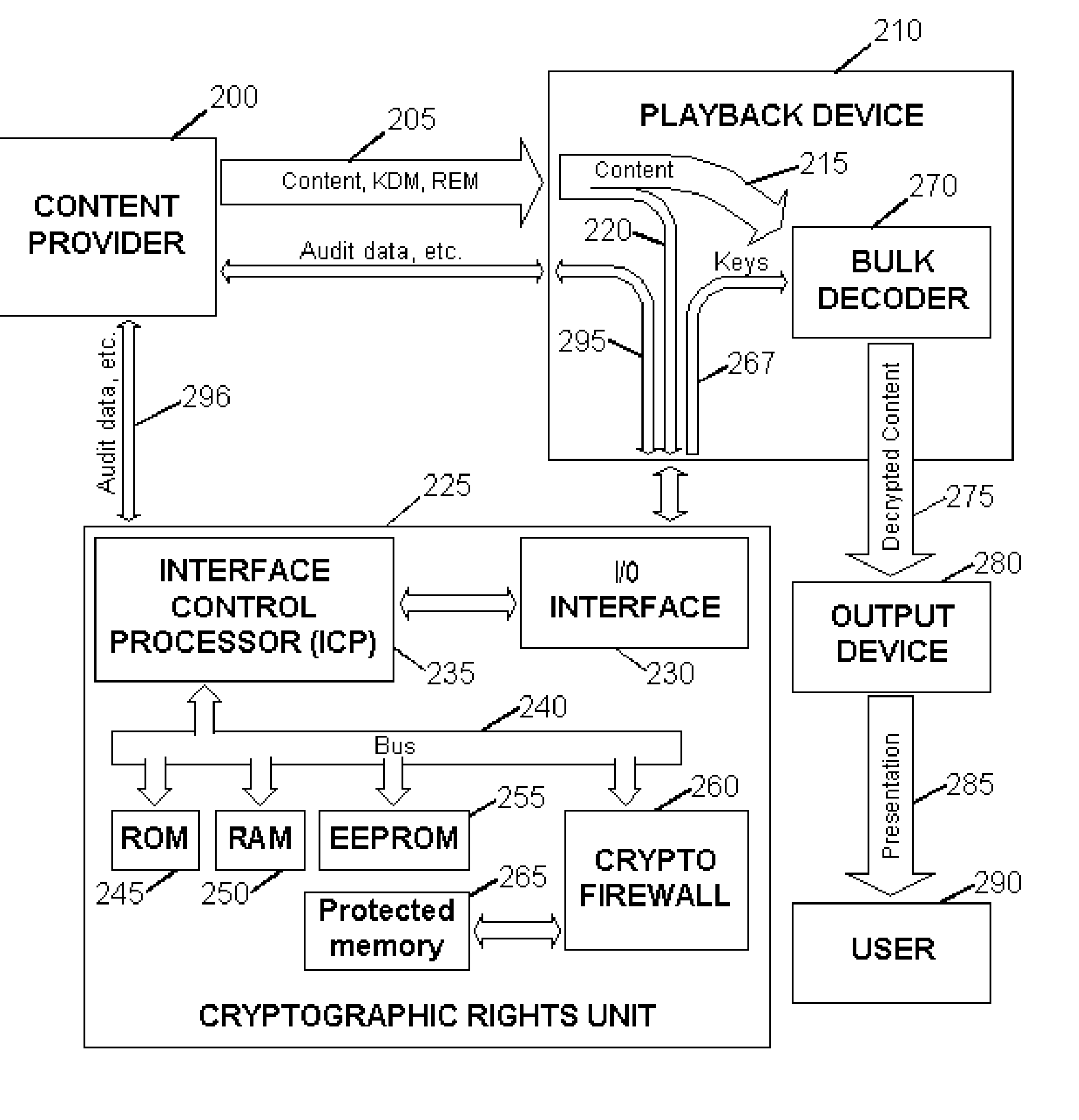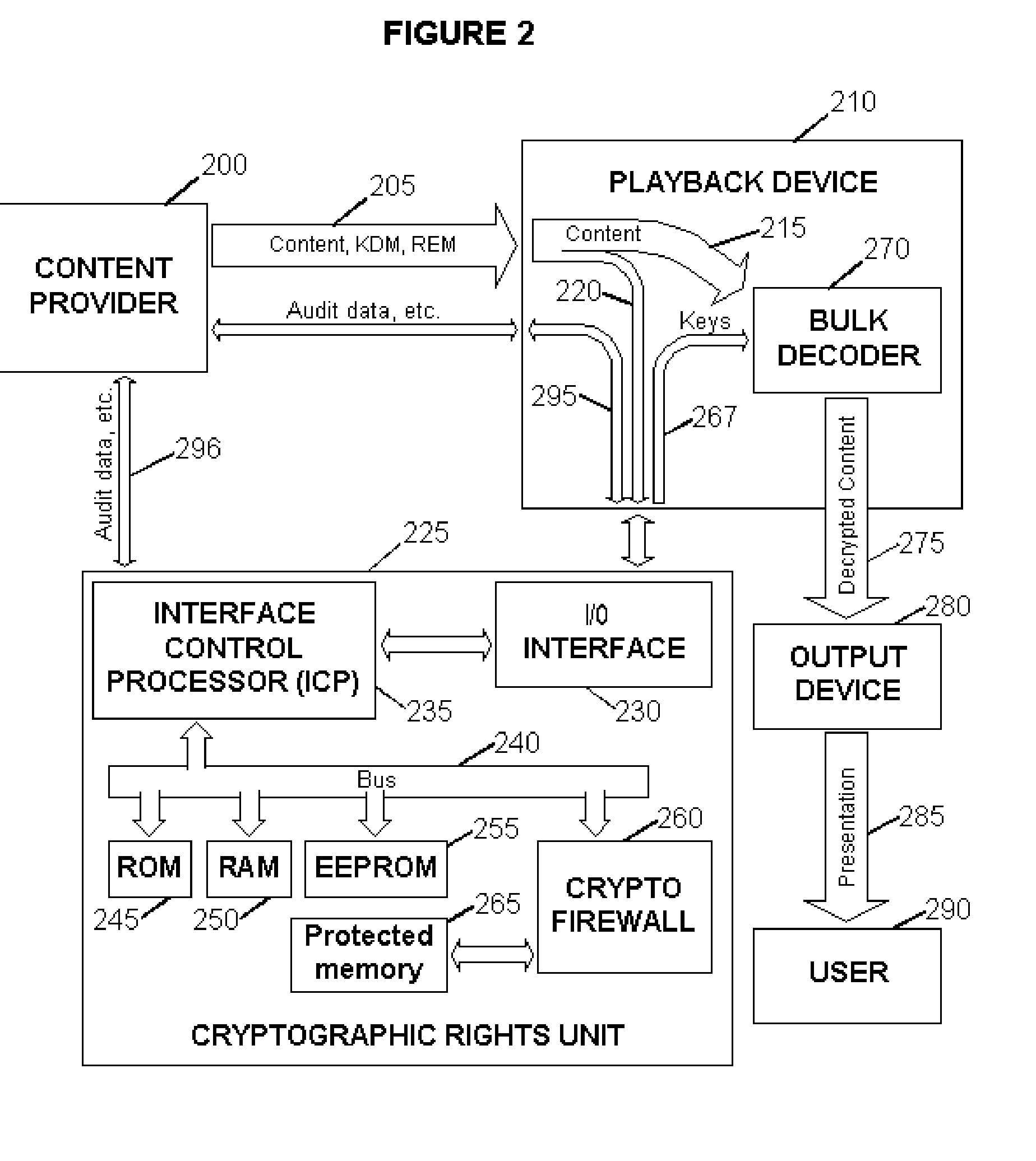Digital Content Protection Method and Apparatus
a technology of digital content and protection method, applied in the field of digital content protection method and apparatus, can solve the problems of high risk, inferior quality and reliability of pirate services, and high distribution cost and customer acquisition cost, so as to minimize the probability that attackers will profit from attacks and improve system security , the effect of reducing the probability of attackers stealing
- Summary
- Abstract
- Description
- Claims
- Application Information
AI Technical Summary
Benefits of technology
Problems solved by technology
Method used
Image
Examples
Embodiment Construction
[0050] The following description is presented to enable any person skilled in the art to make and use the invention, and is provided in the context of a partiapplication and its requirements. Various modifications to the disclosed embodiments will be readily apparent to those skilled in the art, and the genprinciples defined herein may be applied to other embodiments and applications without departing from the spirit and scope of the present invention.
Definitions
[0051] Asymmetric Function: An easy-to-compute function for which a complementary operation (such as its inverse) is computationally hard without a private key, but easy to compute with the private key. The RSA cryptosystem is thought to be asymmetric, since inverting the public key operation (i.e., performing the private key operation) is only easy with if the private key is known.
[0052] Content Decryption Key (CDK): A key required to decrypt some encrypted digital content.
[0053] Content Provider: An entity that manages the...
PUM
 Login to View More
Login to View More Abstract
Description
Claims
Application Information
 Login to View More
Login to View More - R&D
- Intellectual Property
- Life Sciences
- Materials
- Tech Scout
- Unparalleled Data Quality
- Higher Quality Content
- 60% Fewer Hallucinations
Browse by: Latest US Patents, China's latest patents, Technical Efficacy Thesaurus, Application Domain, Technology Topic, Popular Technical Reports.
© 2025 PatSnap. All rights reserved.Legal|Privacy policy|Modern Slavery Act Transparency Statement|Sitemap|About US| Contact US: help@patsnap.com



